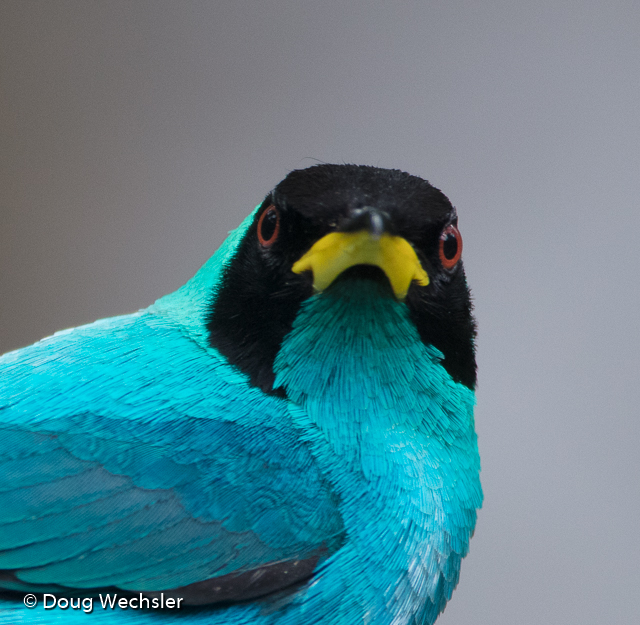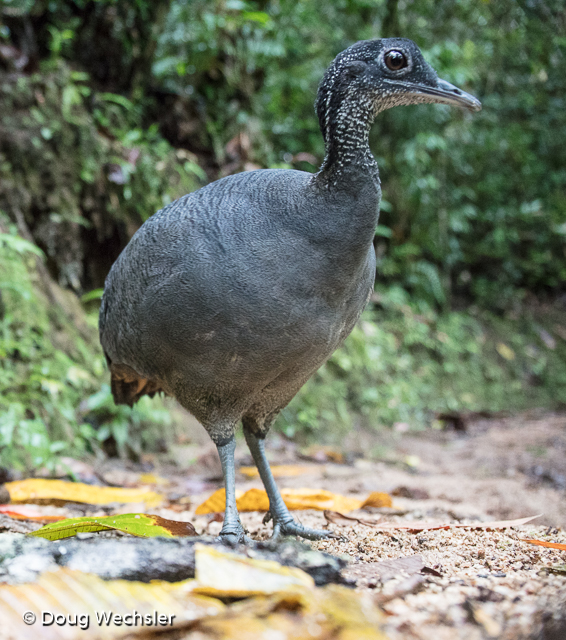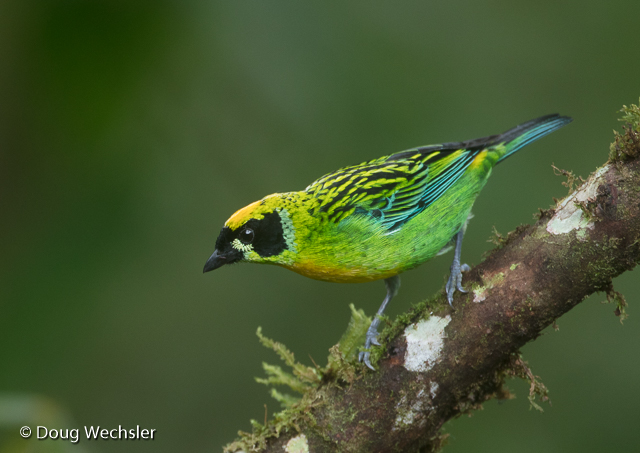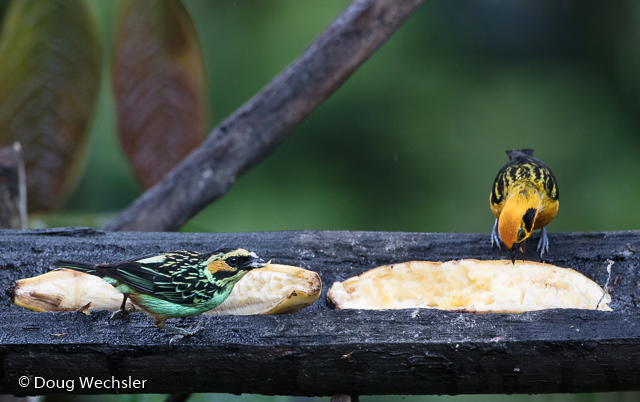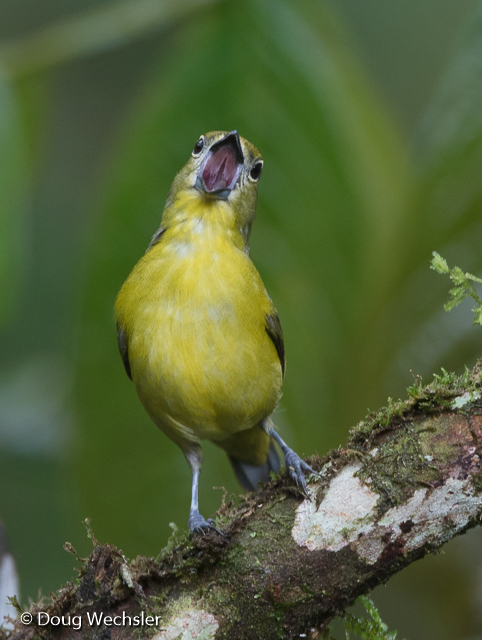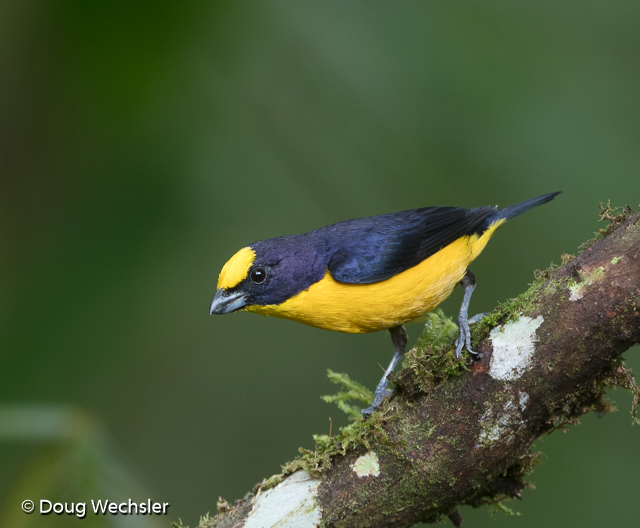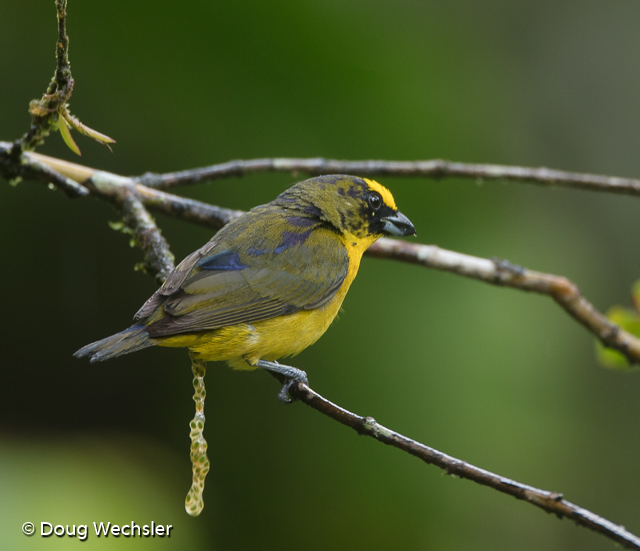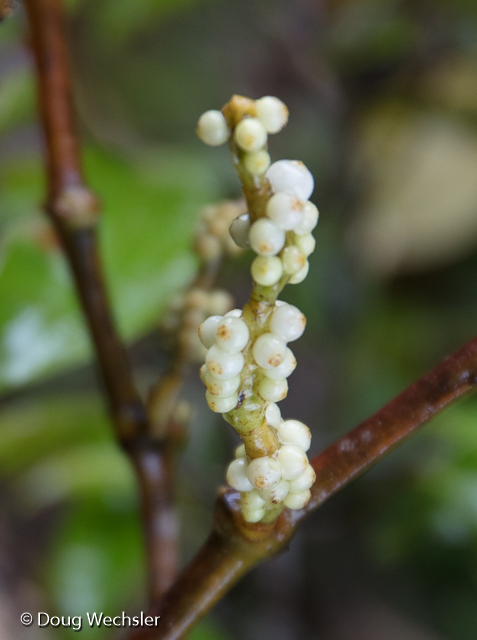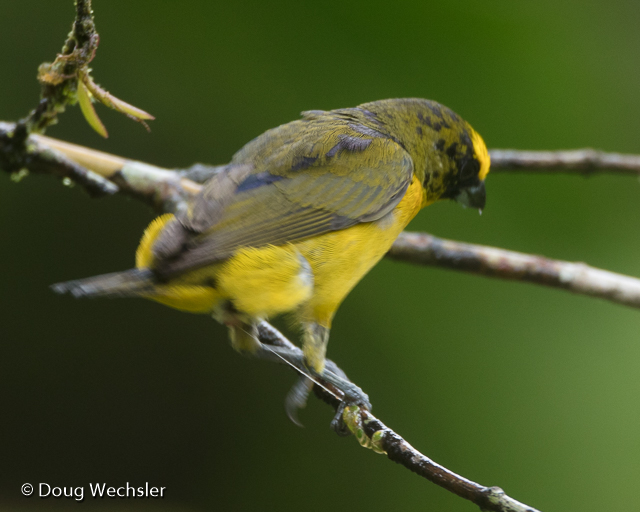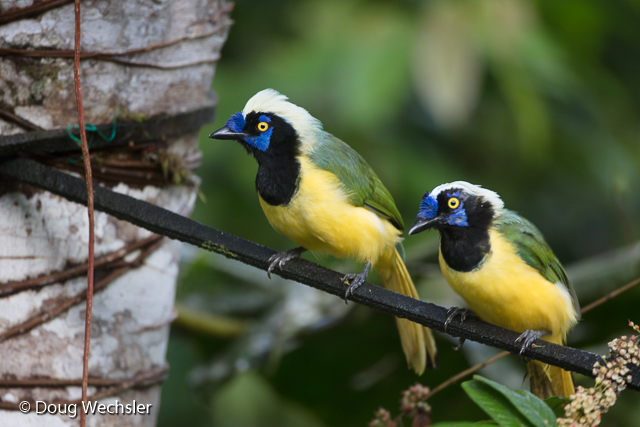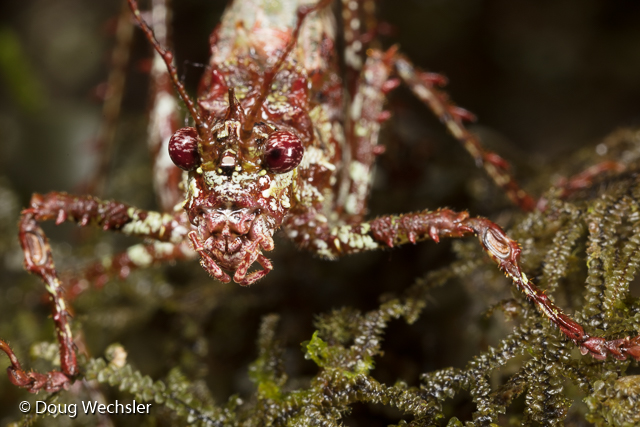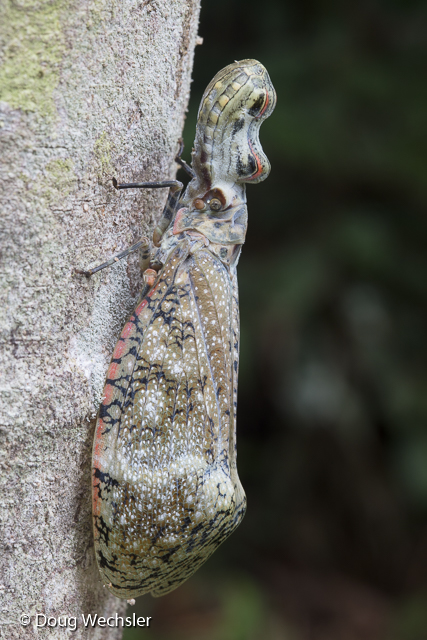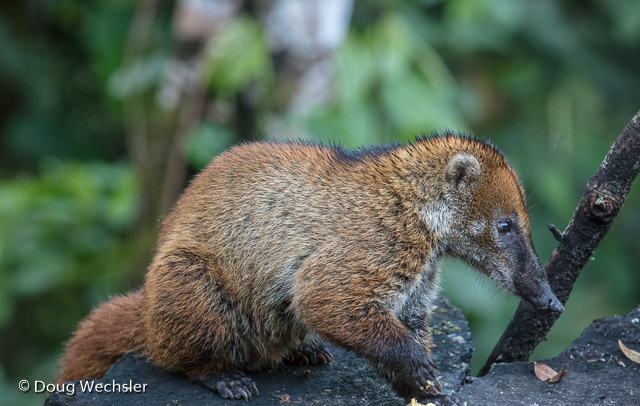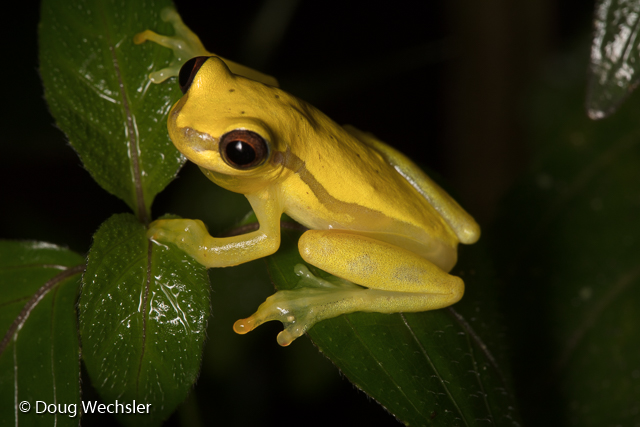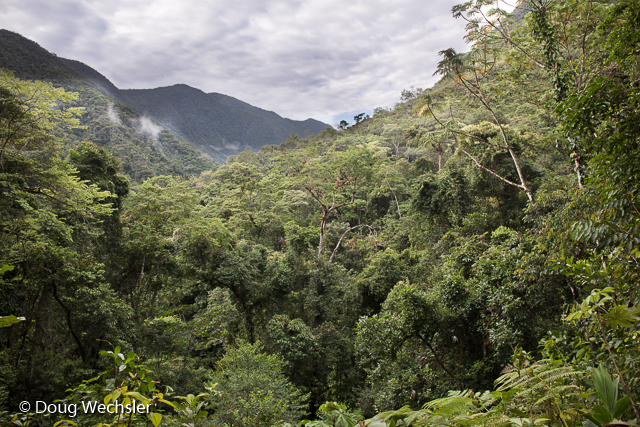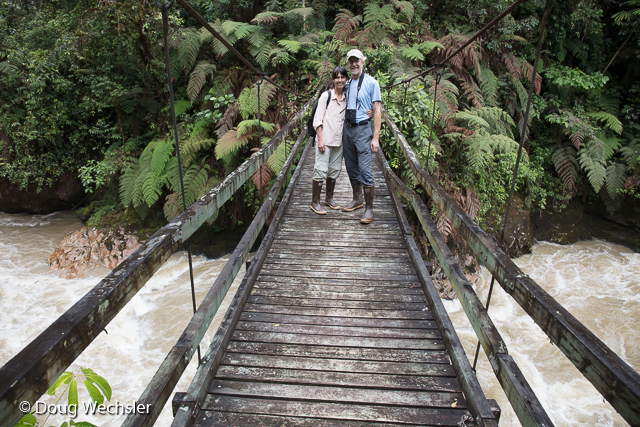Copalinga, a delightful ecolodge, sits above the Rio Bombuscaro near the eastern base of the Andes in southern Ecuador. The lodge is owned and run by Catherine and Boudewijn, who built it after moving there from Belgium in 1998. Debbie and I spent 16 days volunteering on various projects while enjoying its bountiful natural treasures.
Copalinga’s most famous resident is the Gray Tinamou. Elsewhere this bird is tough to see, but it appears daily near a viewing blind 10 minutes up the trail.
Copalinga is also known for its diversity of tanagers, many of which visit feeders at the lodge.
This Thick-billed Euphonia may be doing its business, but it is also taking care of business for a mistletoe plant.
Mistletoe grows on tree branches, penetrating the wood to get its nutrients. It uses a special trick to get the euphonia to deposit its seeds in the proper place.
The slimy seeds stick to the euphonia’s rear end so that it must wipe them off on a branch just where the mistletoe needs to germinate.
There are plenty of other captivating birds flitting around Copalinga. These two vie for title of noisiest species.
The property has a high diversity of hummingbirds, with more species than the entire U.S.
I had the honor of documenting the 34th species of hummingbird for Copalinga with the following photograph.
The diversity of other animals is equally impressive. A few examples:
And a closer view of its face. Note the ear, a tiny slit near the joint of its front leg.
My favorite insect, the machaca.
A member of the raccoon family, the coati.
While prowling about at night with my headlamp, I found this treefrog at the edge of a puddle.
The scenery from the excellent trail system beckons.
An added benefit, the Bombuscaro entrance to Podocarpus National Park is just a few minutes down the road.
It was great to witness this private conservation effort first hand and see what two people (with a great deal of help) can do to protect valuable habitat.
[Update: Catherine and Baldwin have sold Copalinga to the Jocotoco Foundation. It is the foundations 12th reserve. It is still a fantastic place to visit. Contact Jocotours to make reservations: Call directly: +593 2 505 129]

